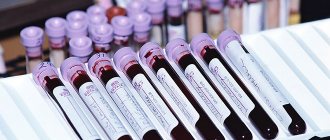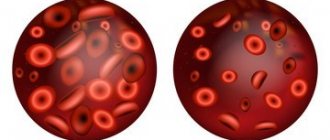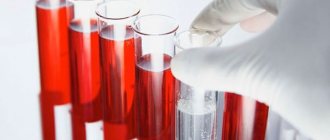When foreign bodies enter the human or animal body, they cause a specific reaction. The article examines the complexes of the humoral immune response in the context of the secretion and effect of immunoglobulins on the antigen. They are substances that function as antibodies and neutralize foreign microorganisms, ultimately developing increased body resistance to infectious diseases.
General characteristics of immunoglobulins
Immunoglobulins are glycoproteins that participate in the formation of the immunity of humans and vertebrates. They are globular proteins and are released when combined with antigens that stimulate their formation. These antibodies are found in the blood and other body fluids or on cell membranes, therefore, depending on the location, they are divided into three groups: serum, secretory and surface. In humans, it is customary to distinguish five classes of immunoglobulins: A, D, E, G and M. Their differences are revealed in molecular weight, sedimentation coefficient and participation in molecular reactions. The content of immunoglobulins of various classes is an important component of the humoral immunity.
Immunoglobulin M and its functions
All antibodies are divided into five classes: IgG, IgM, IgE, IgD, IgA. They differ in the structure and composition of amino acids, as well as in the functions they perform. Immunoglobulin M is an indicator of humoral immunity, which is the first to protect the body from infections.
Immunoglobulins M are special protective cells of the human body that have a fairly large molecular weight. In addition, they are the very first to respond to any infection or dangerous microorganisms.
These blood compounds form a whole class of M antibodies. When an acute infection enters the body, they are produced in the blood vessels, resulting in a strengthening of primary immunity.
Thus, the M class of immunoglobulins is responsible for ensuring the primary response of the immune system to infection.
A significant decrease in the concentration of immunoglobulin of this class indicates a deficiency of humoral immunity , and when it increases, as a rule, the development of an acute infectious disease of any etiology, viral hepatitis, autoimmune disease, manifestation of pyelonephritis, as well as myeloma or pyelonephritis is suspected.
Immunoglobulins in history
In 1959, English researcher Rodney Robert Porter took the first step towards understanding the structure of immunoglobulins. He split the rabbit antibody molecule into two fragments using the enzyme papain. One of them retained the ability to bind antigen, the other turned out to be antigenically inert and did not interact with it. The fragments were named Fab and Fc. The assumption was confirmed in Nissonov's experiments. Using pepsin, he isolated a divalent fragment that bound antigen. During experiments with mercaptoethanol and some other compounds that disrupt interchain bonds, Gerald Maurice Edelman showed the presence of heavy and light chains in the immunoglobulin molecule.
Screening for food allergens, determination of specific IgE
Food allergen screening provides an opportunity to determine sensitivity to the most common food allergens and identify allergies to specific foods. The material is a sample of the patient's blood serum.
No special preparation for analysis is required.
Indications
Screening is prescribed if it is necessary to diagnose food allergies. This study examines susceptibility to the following types of allergens:
- Citrus.
- Other fruits.
- Nuts.
- Seafood.
- Vegetables.
- Meat of animals and birds.
- Cereals.
- Egg white.
- Dairy products.
Decoding the results
Class E
Immunoglobulin E is closely related to the mechanism of atopic allergic reactions. It quickly fixes on skin cells, mast cells, basophils and mucous membranes, so it is present in blood plasma only in small concentrations. Immunoglobulin E is involved in immediate allergies and is part of the protective anthelmintic immunity. Its basic physiological function is to protect the outer mucous membranes. This occurs through local activation of plasma factors as well as effector cells through the induction of acute inflammatory reactions. Immunoglobulin E is studied in reaction with specific household allergens, nutrients, and pollen. It can be activated by eosinophils and macrophages.
Types of skin tests
There are two types of skin tests:
The results of the scratch test are interpreted 20 minutes after execution. Increased sensitization of the body to a specific allergen manifests itself in the form of severe redness at the site of application of a particular substance. Possible swelling. Additionally, the results are analyzed after 24-48 hours. If the papule is more than 2 mm in size, then the test is considered positive.
The reliability of immunological research methods is about 90%, while skin testing with food allergens gives the correct result in slightly less than half the cases. That is why it is preferable to identify allergens by testing the blood for immunoglobulins E to various irritants. Having determined the cause of the deviations, you should contact a specialist as soon as possible.
Allergy tests are mandatory if a person has an allergic disease or is suspected of having such a disease. Allergy tests allow you to determine the sensitivity of a particular patient to various types of allergens.
Structure of immunoglobulins E
The antibody molecule contains four chains: two heavy (H) and two light (L). Their connection is covalent through disulfide bridges. Each antibody molecule contains the presence of two identical antigen-binding Fab fragments, which determine its specificity, and one Fc region, which does not perform the function of antigen binding, but ensures the operation of effector biological mechanisms. It affects “its” receptor in the membrane of different types of cells (mast cell, macrophage, neutrophil). Light and heavy chain types consist of separate segments called domains. They are present in variable (V) and constant (C) versions. The number of domains in heavy chains depends on the class of immunoglobulin and determines the letter designation of its molecules. Constant segments determine the specific properties of antibodies of each group.
Analysis for immunoglobulin E - if overestimated or underestimated
An immunoglobulin E test must be performed to identify allergic diseases. It is this analysis that is considered the main indicator of the concentration of antibodies in the human body.
Information about the drug
Immunoglobulin type E is produced in B lymphocytes. According to its structure, it has 2 light and heavy chains. Differing in structure, it involves some biological functions of globulins of different types. IgE can attach to basophils and mast cells with receptors. It is this fact that plays a role in the development of a rapid-type hypersensitivity reaction.
The release of serotonin and histamine occurs during contact of reagents with allergens. This process occurs on the cell membrane itself. At this time, the manifestation of allergies develops. Immunoglobulin E is most often associated with atopic diseases, dermatitis, and bronchial asthma. Read more about immunoglobulin classes.
Immunoglobulin takes part in the formation of the immune response to roundworms, nematodes and other parasites. Changes in concentration in a blood test for immunoglobulin may be determined by genetic predisposition.
In children whose parents have suffered from allergies for a long time, the immunoglobulin level is too high. As for newborns, a blood test for immunoglobulin is not performed, since it is absent and accumulates as the child grows older.
Immunoglobulin levels in the blood
The construction and production of immunoglobulin occurs when the body needs it to protect against infection, as well as during allergies. An increased rate in adults and children indicates that the body is prone to allergies and atopy.
Linking indicators depend on the age and general health of the patient. Therefore, donating blood for immunoglobulins is very important in different age groups to prevent allergies. As doctors note, a clear decrease in immunoglobulin occurs in older people.
Normal for children:
- Children under 1 year - 0 - 15 kE/l;
- Children from 1 year to 6 years - 0 - 60 kE/l;
- Children from 6 to 10 years old - 0 - 90 kE/l;
- 10-16 years - 0-200 kE/l;
For an adult, the norm is considered to be from 0 to 100 kU/l.
The greatest concentration occurs in the spring, this is due to flowering. Especially in April and early May. It is at this time that the norm in adults may increase slightly and range from 30 to 250 kE/l.
The level is considered lower in winter, especially in December. If the norms are significantly deviated, the cause may be the development of pathologies. Once carried out, the blood test for immunoglobulin is deciphered by a doctor in the laboratory. Depending on the research methods, the laboratory itself can establish some standards for immunoglobulin E in the blood.
How to get tested
The study should be carried out following certain rules, namely:
1. The analysis must be carried out early in the morning;
2. It is necessary to take the test on an empty stomach, and the last dinner should be at least 10 o’clock;
3. Before taking the exam, you should not do exercises or experience strong emotional shocks;
4. Water can always be consumed;
5. You should not eat highly fried and salty foods the day before the test. Avoid spicy foods and alcohol;
Popular Medicinal properties of oats and methods of preparation
6. Before the analysis, you should not do an ultrasound, fluorography or x-ray.
If the result is in doubt, additional analysis can be carried out, because a mistake could have been made in the laboratories. To clarify the result, you can contact another hospital for a repeat test.
What does an immunoglobulin E test show?
Such a study for children is considered more accurate than for older people of different ages. The laboratory technician will see even a slight deviation in the child’s analysis. Overestimated indicators are associated with:
- Intolerance to certain foods;
- Presence of worms;
- Dermatitis of various types;
Presence of Wiskott-Aldrich sign. There are cases when immunodeficiency is transmitted genetically. In such cases, it manifests itself in the absence of the thymus. In this case, the immune system does not develop.
In this case, hyper IgE may manifest itself in the following signs: The general norm of immunoglobulin is exceeded;
- Frequent rhinitis and sinusitis;
- Various autoimmune diseases;
- Pneumonia;
- Damage to skin surfaces.
A lower rate also indicates some problems. Usually associated with the presence of neoplasms, as well as with hereditary abnormalities.
Raising standards in an adult
After the age of 18, an increase in immunoglobulin is associated with the same problems, the only thing is that it can happen even due to a minor allergy. For adults, an increase may occur due to the presence of asthma of varying degrees of complexity.
The presence of various worms or infections in the body of an adult can seriously affect the mucous membrane and protective functions of the blood. In an adult, an increase in the norm can be caused by the following diseases:
- Immunodeficiency;
- Aspergillosis;
- Increased IgE; Doctors consider these pathologies to be very serious, and neglecting treatment is not recommended.
Decreased performance
Reduced concentration in medical practice is very rare and can be caused by the following pathologies:
- Associated with congenital immunodeficiency (rarely acquired);
- As a result of damage to some cells. Very often, decreased levels can affect the further occurrence of allergic rhinitis. But to prevent this, it is worth doing detailed tests for antibodies.
Decreased immunoglobulin E
If after the tests it was found that the norm is very high, the doctor must conduct additional tests and determine which allergen caused the increase.
Often certain types of samples are used, with typical allergens. The analysis is carried out gradually, observing the reaction.
Such samples include:
- Pollen;
- Food;
- Household dust and mites;
- Various types of fungi;
- Pet hair.
Allergy testing is prohibited if a person has an exacerbation of a chronic disease, infection, or treatment with hormonal medications. Increased norms in a child can be eliminated as in an adult.
But only after 6 months of age. If, in time, the allergy test was able to determine the irritant, the doctor must eliminate sensitivity to this type of pathogen. This could be an injection, a procedure, or physical therapy.
Popular Children's immunity at maximum with Viferon suppositories
During an exacerbation, the doctor prescribes antiallergic drugs (tablets or ointments), as well as emollient creams for dermatitis. General treatment in this case has results. This allows you to quickly bring all indicators back to normal.
Treatment with drugs
Drugs are usually selected according to the type of allergic reaction in order to act directly.
1. Use of antihistamines. They suppress the functioning of individual receptors that react to the allergen. The following drugs can be considered effective: Suprastin, Zodak, Clemastine, Loratadine. Some of these drugs can be used to treat children;
2. Medicines for local use. They can very quickly eliminate the external manifestations of the disease and prevent complications from occurring. The following are considered effective: Bepanten, Radevit, Eplan cream, Fenistil;
3. To stimulate the immune system, drugs such as Arbidol or Amiksin are prescribed. Some patients may receive small doses of the allergen to improve immune system function. In such cases, the allergic reaction does not appear for a long time;
4. If the cause of the disease is helminths, you can treat with the following drugs: Pyrantel, Levamisole, Piperazine. The doctor should select medications based on the cause of the disease and the general condition of the patient.
What should be the level of antigens in the blood?
Normal antigen levels vary differently among age groups. If we consider immunoglobulin E, the norm in children will be as follows: up to 3 months - 0-2 kU/l, up to six months - 3-10 kU/l, at 1 year - 8-20 kU/l, in a five-year-old child - 10-50 kE/l, in a teenager - 16-60 kE/l. In older people the range of values is higher. For an element such as immunoglobulin E, the norm in adults is 20-100 kE/l. Antigen testing helps diagnose atopic allergic reactions. To make this diagnosis, an increased level of antibodies in the blood is not enough, and approximately 30% of patients have an indicator within the acceptable range. The child’s own immunoglobulin E completely replaces the mother’s 4-6 months after birth.
Treatment and correction of IgM levels
If a person has an increased level of immunoglobulin M, then the factor should be eliminated ; treatment depends on the reason that caused its increase.
Elimination of infections and inflammatory processes will lead to normalization of the indicator.
And if tests show a decrease in this substance in the blood, then replacement treatment , i.e. artificially replenishing the level of the hormone. For this purpose, injections with the introduction of immunoglobulin are performed, as well as blood transfusions.
Doctors who specialize in problems related to immunoglobulin E
Doctors are contacted about this issue if there is a clear cause for concern, the need for detailed advice on testing, or the need for a personal examination. You can make an appointment with a doctor at a specialized clinic. To save your time in line, you need to do this in advance. You can also call an immunologist at home. He will conduct a survey, examination, prescribe tests for immunoglobulin E, and as a result, the doctor will make a diagnosis on which further treatment will depend. In some specialized clinics, immunologists are available 24 hours a day.
Increased rates in adults
As a rule, in an adult, an analysis for immunoglobulins does not have sufficient information. Almost all of us, due to constant contact with allergens, have elevated levels of this protein in the blood. Total immunoglobulin E in adult patients can increase significantly only in the case of a large list of substances that cause allergies in combination with bronchial asthma. Today, doctors are able to diagnose using this analysis only half of adult patients with various allergic manifestations, because to make a correct diagnosis it is not enough to determine the increase in protein, it is necessary to identify the pathogen, and there are a great many of them in the external environment.
An increase in immunoglobulin in adults can be caused by the following pathologies:
- Infestation with parasites.
- Immunodeficiency.
- Hyper-IgE syndrome.
- Bronchopulmonary aspergillosis.
- IgE myeloma.
Too high a level of E ige in adults most likely means Hyper-IgE syndrome. This pathology is characterized by an increase in protein levels to 50,000 kU/l. This is a genetic disease that is accompanied by the following symptoms:
- Frequent pneumonia.
- Purulent inflammation.
- Chronic rhinitis and otitis.
- Osteoporosis.
- Spinal diseases.
- Frequent fractures.
- Frequent fungal infections.
- Autoimmune diseases.
- Tendency to caries.
- Rough massive facial features.
Features of antibodies
A disease in which these antigens in the blood reach a level of 2000 kU/l or more is called “hyper-IgE syndrome.” At the same time, acute allergic reactions to substances that are in the air, food, clothing, and others are noted. Patients with asthma may exhibit sensitivity to certain allergens, but the overall level of immunoglobulins in the blood often remains within normal limits. In non-atopic reactions, an increase in the amount of these antibodies is observed. Including some forms of immunodeficiency, the concentration of E antigens in the blood serum rises above the permissible norm.
Analysis transcript
As a result, it is assessed to which class a particular allergen belongs. If classes 3 and 4 are identified and the corresponding clinical data are available, we can speak of this allergen as causally significant. When identifying classes 1 and 2, it is necessary to compare them with the data of the clinical picture, the period of the disease, and take into account the presence of possible cross-reactivation.
When assessing the results of determination of serum IgE and comparing them with the results of skin tests, it is necessary to take into account that the half-life of IgE from blood serum is 2-3 days, and on mast cells in the skin they persist for up to several months.
The coincidence of positive results during MAST and skin tests is observed in the intensity of the reaction and the list of allergens.
Indications for testing
Diagnosis of the level of immunoglobulin E in the blood is carried out in the treatment of many diseases. These include childhood bronchiolitis (an antibody test indicates the possibility of lung pathology), various types of fungus, allergies to certain medications, a decrease in the body’s overall resistance, skin rashes, rhinitis and others. Typical diseases in which an increased level of immunoglobulin E is observed are allergies, liver cirrhosis, helminthiasis, and mononucleosis. When taking the necessary tests, you should adhere to some rules. For example, if a patient is additionally taking other medications, he should inform the immunologist about this. To obtain the best results, blood is taken from the patient in the morning on an empty stomach. The results of tests for the level of immunoglobulins may be unreliable in cases where the patient had taken alcohol, smoked, or experienced heavy physical or psychological stress the day before. For women, the date of blood sampling to determine antibodies is determined individually, since the phase of the menstrual cycle also affects the result of the study.
Indications for analysis
The reasons for conducting tests to determine the norm of immunoglobulin M may be:
- Clearly expressed autoimmune phenomena;
- Testing humoral immunity;
- The course of various diseases with complications, in acute or chronic form;
- To identify dysfunction of the hematopoietic organs and reduce blood clotting;
- Development of various liver diseases;
- Deterioration of the digestive system;
- Signs of malabsorption syndrome;
- Monitoring the effectiveness of therapeutic therapy for Waldenström macroglobulinemia;
- To identify and monitor the treatment of oncological diseases (a particularly important analysis for people who have a connective or lymphoid tissue tumor);
- For effective diagnosis of perinatal infection of the fetus with a disease of infectious etiology.
An additional test for immunoglobulin M can be performed:
- When conducting special complex diagnostics of immunity;
- To evaluate the results of treatment with drugs containing immunoglobulin;
- With a full examination of patients who are often exposed to various infections;
- As a preventive examination for people with reduced immunity.
Immunoglobulin a is reduced
When it comes to a deficiency of these antibodies, the reasons may also be pathological. When immunoglobulin a is significantly reduced, this may indicate the development of diseases and conditions such as:
- Inflammation of the colon (after acute intestinal infections);
- Hereditary/selective IgA deficiency;
- Hypoplasia of the thymus;
- HIV/AIDS and other immunodeficiency conditions;
- Tumors in the lymphatic system;
- Ataxia;
- Nephrotic syndrome.
There are some internal and external factors due to which the IgA level may decrease slightly, these include:
- Pregnancy period;
- Extensive burns;
- Kidney failure;
- Treatment of radiation-related therapy.
We also must not forget that immunoglobulin A is reduced in a child under 6 months due to the physiological characteristics of the human body.
All test indicators must be assessed by a specialist; diagnosing yourself, much less prescribing treatment, is strictly prohibited.
There are cases when patients are given a referral for a test, the significance of which they often do not know. For example, what are class A immunoglobulins? A referral for an IgA immunoglobulin test can be received from a doctor for both children and adults. So what can this indicator tell the doctor?
Forms
In the human body, this substance exists in several forms: secretory and serum. Secretory IgG takes part in the local immune response. In its composition, it contains an additional secretory component, which is reproduced in the epithelial cells of the mucous membranes. When the substance passes through the cells, a secretory component is attached. It is necessary to ensure the stability of immunoglobulin IgA in milk, bile, vaginal secretions, tear fluid, saliva, and respiratory and digestive tract organs. Class A secretory antibodies protect the body from the effects of foreign agents such as bacteria, viruses, fungi and allergens.
When a foreign microorganism gets on the surface of the mucous membranes, the secretory immunoglobulin begins to bind to the already appeared antigens. The resulting complex prevents the adhesion of foreign agents to the surface of the mucous membranes. Thus, the pathogenic microorganism does not penetrate into the internal environment of the body.
If there is a deficiency of secretory immunoglobulin A in the body, then frequent relapses of diseases occur.
There is much less serum immunoglobulin in the body than secretory immunoglobulin. The gamma globulin fraction makes up about 10% of the total amount of antibodies. The formation of serum immunoglobulin A occurs in mature B-lymphocyte cells. The vast majority of this substance is localized in the gastrointestinal tract. Activation of the compliment system occurs along an alternative pathway. The level of these antibodies is not controlled by the thymus and in childhood its quantity is not enough to ensure normal protective functions of the body. The determination of serum immunoglobulin A is a diagnostic marker for certain diseases of the immune system.
Uncertainty of results
To obtain reliable results, you must adhere to the basic rules for all tests. The blood test is highly accurate, but errors are possible. The results of the study can be distorted by alcohol abuse and taking medications (immunosuppressants, estrogens, gold preparations), severe kidney disease, burns, removal of the spleen, and exposure to ionizing radiation. Immunoglobulin A may be lowered if a person has been vaccinated in the last 6 months or has taken immunoglobulins.
Immunoglobulins A, M,
G , E
(Immunoglobulin A, M, G, E)
What is this :
What's the point:
Depending on the time, place and type of pathogen, IGs are divided into classes:
Immunoglobulin A (IgA)
– are found in two forms: serum (in the blood, 10-15% of the total number of IGs) and secretory (in the bronchial and intestinal mucosa, sweat, tear fluid, saliva, colostrum). Secretory IgA is a component (along with its other elements, such as phagocytes, lymphocytes, cytokines and the complement system).
IgA is the border troops of our body, they give the first battle to all enemies who violate the borders of our homeland-body. At least 50% of immune resources are barrier immunity. “Don’t be afraid of heat or cold, harden yourself like steel!” – this is about training “border troops” for this type of immunity. IgA also protects our mucous membranes from the action of proteases (enzymes that break down protein bonds are found in the gastrointestinal tract and are also secreted by microbes).
IgA makes up 10-15% of the total number of Ig in the blood.
Norm: 0.7 – 4
g/l (there may be different reference values in laboratories).
Promotion
:
- oncology (carcinoma - a tumor of epithelial cells, myeloma - a tumor of plasma cells, chronic lymphocytosis - a tumor of B-lymphocytes);
- autoimmune diseases (systemic lupus erythematosus, rheumatoid arthritis, glomerulonephritis);
- chronic infections;
- cirrhosis of the liver.
Decline
:
- selective immunodeficiency IgA (1:400 in the population);
- celiac disease;
- absence of spleen;
- AIDS;
- congenital telangiectasia (persistent dilatation of skin vessels).
Immunoglobulins M (Ig M)
- are formed when B lymphocytes first encounter an enemy antigen and say in surprise: what the hell is this?! That is, this is the primary response to the antigen (apparently, swearing, that’s why they call them M). IgM consists of five monomers (and not one or two, unlike other IGs), one of them is in the shape of the letter Y, so it lifts the antigen “onto the pitchforks”, forming a complex with it. IgM rises in the first weeks of infection and is then replaced by IgG, which provides long-term protection. Thus, IgM is the main indicator of recent (new) infection.
IgM constitutes 5-10% of the total number of Ig in the blood.
Norm: 0.5-2.5
g/l (there may be different reference values in laboratories)
Promotion
:
- liver diseases;
- chronic infections (especially fungal);
- chronic and acute lymphocytic leukemia.
Decline
:
- neonatal period (up to about 6 months);
- amyloidosis;
- multiple myeloma (non-IgM);
- treatment with cytostatics.
Immunoglobulin G (IgG)
–
provide long-term protection against re-infection. If IgM, during a primary infection, labels all antigens hastily and inaccurately (and this is costly), then IgG, with the help of memory T-lymphocytes, is trained to label a specific pathogen (rubella, chickenpox, measles, etc.) leisurely and accurately. Their production is more elaborate and takes longer, so they appear several weeks later than IgM. IgG constantly circulates in the blood and with repeated infection, their number increases. Due to its small size, IgG is the only one of all IGs that passes the placenta and provides immunity to the fetus and newborn for up to 6 months.
They are an indicator of a previous (familiar) infection.
IgG constitutes 70-80% of the total number of IGs in the blood.
Norm: 7-16 g/l (there may be different reference values in laboratories).
Promotion
:
- recovery from primary infection;
- chronic infections;
- liver diseases;
- autoimmune diseases;
- chronic lymphocytosis;
- sarcoidosis (granuloma nodules, most often in the lungs and liver).
Decline
:
- common variable immunodeficiency;
- protein deficiency syndromes;
- splenectomy;
- pregnancy.
Immunoglobulins E (Ig E)
—
they have two main functions:
Normal: up to 100 IU/ml (there may be different reference values in laboratories).
Increase
:
Decrease:
- secondary or primary immunodeficiencies;
- ataxia-telangiectasia.
There are also Immunoglobulins
D ( IgD ),
the role of which has not yet been well studied; their participation in autoimmune reactions is assumed. IgDs make up 1% of the total number of IgDs in the blood.
What to do about it and what to pay attention to:
– the main task of a doctor is to answer the question: doctor, I often get colds, is my immunity weakened?!
The most common immunodeficiencies associated with impaired IH function:
- selective immunoglobulin A deficiency;
- common variable immunodeficiency;
- transient hypogammaglobulinemia in children and other, more rare, immunodeficiency conditions.
– determination of the level of IG – one of the analyzes of the immune system along with such studies as:
- and their phagocytic activity;
- complement system;
- level of T-lymphocytes and their subpopulations.
A note from life: you never develop immunity to rudeness. Be polite, don't strain yourself!
Viktor Yamshchikov, minimalist doctor
Serum immunoglobulin A is one of the subtypes of globulins in the blood. These are secretory antibodies that are mainly responsible for the humoral protection of the mucous membranes and skin. Immunoglobulin a increases sharply when viruses, microbes and infections appear in the body in the oral cavity, gastrointestinal tract, and respiratory tract. Group A antibodies bind all invading microbes and foreign substances, thereby preventing their further reproduction and spread to internal organs.
Answering the question of what immunoglobulin A is, we can give a specific explanation. This is one of the main factors in the body's primary immune response. However, these protective elements do not have immunological memory, which means that upon re-infection, new antibodies will be produced. That is why, when the doctor receives the results of a blood, saliva or urine test, where it is recorded that immunoglobulin A is elevated, the specialist has every reason to suspect that the patient is developing an acute inflammatory process in the body.
Let's talk in more detail about type A immunoglobulins, what should be the concentration of substances in a healthy person, and what can deviations in the level indicate?
Increase in indicator
If immunoglobulin A is elevated, then there are pathological processes in the human body. This indicator is mainly influenced by the reaction to an allergen or infection. In some cases, the cause is the presence of parasites. Therefore, when making a diagnosis, all studies and analyzes are taken into account.
Elevated Iga indicates the development of various diseases:
- blood cancer;
- acute liver damage;
- bacterial diseases of the respiratory system;
- infection of the gastrointestinal tract;
- rheumatoid arthritis;
- lupus erythematosus;
- alcohol abuse.
The indicator can be affected by certain factors, for example, taking medications and hormones, physical activity on the eve of the test.
The attending physician should be notified about this. It is also worth noting that immunoglobulin A does not remember viruses and microbes, as a result of which, when re-infected with them, its level increases sharply. Therefore, the determination of an elevated enzyme in the blood indicates the course of an acute inflammatory process, and not a chronic form.
The activity of this element occurs most often with frequent acute respiratory infections and skin infections. In adults, the increase is affected by constant consumption of alcoholic beverages and poisoning with them.
Elevated immunoglobulin A requires additional examinations and identification of the cause of this condition. With timely treatment of the underlying disease, after recovery, the level of enzyme production gradually normalizes.
Interpretation of analysis results in case of deviations from the norm
If the results of a blood test for the content of serum E-antibodies indicate that the norm for the patient’s specific age is not met, you should contact specialists for advice and treatment. In general, from the results of the study we can conclude:
- increased concentration is the body’s reaction to the allergen;
- decreased is a sign of a developing tumor or serious hereditary diseases in children.
What pathologies can elevated indicators indicate?
An excess of IgE in the blood indicates disturbances in the functioning of the body due to:
- penetration of allergens;
- reactions to the composition of drugs;
- penetration and settlement of helminth colonies;
- viral infection of the body.
An increased indicator can indicate various diseases, which ones are determined by the attending physician.
The most likely diseases in this case will be:
- hives;
- hay fever;
- allergic rhinitis;
- atopic dermatitis;
- food, drug or pollen allergies;
- myeloma;
- bronchial asthma;
- helminthiasis;
- conjunctivitis, sinusitis or rhinitis;
- anaphylaxis;
- gastroenteropathy;
- angioedema;
- hyper-IgE syndrome.
Other reasons that caused an increase in E in the blood are:
Test results with E-protein values below normal are extremely rare, but are accompanied by complaints and disruptions in the functioning of human organs and systems.
For a patient of a particular age, they indicate the presence of:
- tumors of various types;
- hereditary hypogammaglobulinemia, when there is a deficiency of plasma cells;
- Louis-Bar syndrome;
- immunodeficiency diseases;
- ataxia.
Helminths, determination of specific IgE
Identification of helminth allergens allows us to determine the patient’s sensitivity to helminths, in particular, the risk of developing allergic reactions when infected with helminths. No special preparation for analysis is required.
Indications
Screening is prescribed if it is necessary to diagnose allergies to helminths, in particular the following types: roundworms, anisacids, echinococci.
Decoding the results
Normally, the level of specific IgE does not exceed 0.35 IUml. When this indicator increases, the presence of specific antibodies is indicated.
Treatment
Before you find out how to reduce immunoglobulin E, you need to find out the exact reasons for its increase. Therapy is always aimed at eliminating the allergen or disease that caused the body’s reaction. Only a doctor can give you the correct diagnosis by studying your medical history and conducting an examination and interview with the patient. If these measures are not enough, the patient is prescribed additional diagnostic measures.
Based on the results of these measures, drug treatment is prescribed that can lower immunoglobulin in the blood.
Parents of young and middle-aged children should carefully monitor the health of their baby. If you notice an allergic reaction in a child to any food product, pollen, or medicine, you need to try to protect the baby from the pathogen. Many believe that the body must fight allergens on its own and there is no need to take measures to reduce immunoglobulin. However, such an attitude, especially towards children, can lead to fatal conditions such as anaphylactic shock, as a result of which the child may die before arriving at the hospital.
Indicator norm
In humans, immunoglobulin A is responsible for the state of local immunity, the course of infectious diseases and chronic diseases of the liver and kidneys.
It is contained in the body in the form of two fractions:
- Secretory.
- Whey.
Secretory immunoglobulin is found in saliva, sweat, and breast milk and protects the mucous membranes from all kinds of infections. Serum enzyme predominates in the circulating blood, so it is used for analysis.
One feature of this enzyme is that it does not penetrate the placental barrier, therefore, in newborns, immunoglobulin A is reduced, since the baby has not yet been in contact with the outside world.
For about 3-4 months, its antibodies come through breast milk and protect the baby's stomach from bacteria. As the child grows up, the enzyme is produced in full; per year it is already equal to 20% of the norm for an adult, and by the age of five the figure increases. The lifespan of the enzyme is only 5-7 days, then it is excreted from the body.
Standard values for immunoglobulin A:
- from three to twelve months – 0.02-0.5 g/l;
- from one to five years – 0.08-0.9 g/l;
- from five to twelve years – 0.53-2.04 g/l;
- from 12 to 16 years – 0.58-2.49 g/l;
- 16-20 years – 0.6-3.48 g/l;
- after 20 years – 0.9-4.5 g/l.
Small deviations from the norm do not cause the development of serious diseases, but indicate slight inflammation. The danger lies in the significant difference in both directions.
Group A immunoglobulins protect the mucous membrane of the respiratory tract, genitourinary system and gastrointestinal tract. When viruses and infections enter, antibodies are produced that prevent them from penetrating into the internal environment of the body.
An increased value may indicate the development of autoimmune diseases.











